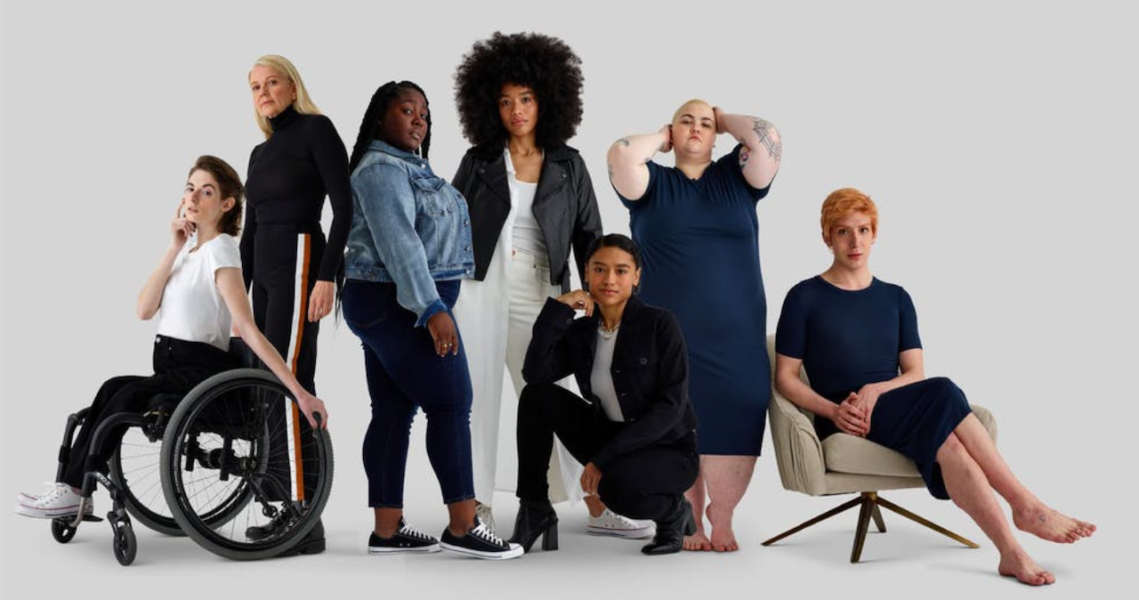In the last few years, fashion has made some small but crucial strides in inclusivity. It’s not quite so unusual as it was a decade ago to see diverse skin tones on the runway or mainstream brands selling an extended size range. Now, the industry is starting to focus on adaptive fashion, or fashion designed for people with disabilities.
In the last three months, brands and retailers from Erdem to JCPenney have rolled out new collections and lines designed with disabled people in mind. A billion people globally, 15% of the population, have some sort of disability. And some of the most common aspects of fashion design are inaccessible to people with certain disabilities, like having a zipper on the back of a dress. The brands doing adaptive fashion stressed that it doesn’t take much to make designs more accessible.
Alex Waldman, creative director at Universal Standard, said all that’s needed is the forethought to predict what small changes can make clothes more accessible. In March, Waldman worked with Erdem designer Erdem Moralıoğlu on a denim collection, infusing it with some accessibility-focused concepts like closures that can be fastened with one hand.
“Adaptive clothing doesn’t need to be radically different from anything else. It’s just putting some thought and consideration into what people need,” Waldman said. “It can be as simple as putting the zipper on the front instead of the back.”
On July 15, JCPenney launched a new kids line called Thereabouts focused on, among other types of inclusivity, adaptive designs for disabilities. The first collection includes sweatshirts with hook-and-loop closures and magnetic zippers for easier dressing and sensory-friendly seaming. The latter is helpful for autistic people, who can be sensitive to certain sensations or irritants like a bothersome tag or rough stitches.
“When designing the Thereabouts collection, it was essential to us that we developed the line in partnership with the disabled community,” said Michelle Wlazlo, evp and chief merchandising officer at JC Penney. She said the company partnered with Alex Herold, CEO and founder of Patti + Ricky, an adaptive fashion marketplace, to develop the collection.
“Their sensory, dexterity and mobility needs were top of mind during the design process,” Wlazlo said. “Each piece was designed thoughtfully, with research and feedback from parents and kids in mind.”
Notably, those who are campaigning for more clothes designed with the disabled in mind often don’t want those clothes to be separated into a different category, removed from “normal” fashion. Universal Standard does not have a distinct category on its online store for adaptive clothing. Waldman said one of her goals with Universal Standard is that anyone with any need, whether it’s adaptive fashion or extended sizing, can shop in the same place for the same things.
Social Surge, a DTC fashion brand that specializes in clothing for the disabled, is launching its first line made for both disabled and able-bodied customers, via a Kickstarter campaign that goes live on July 20.
“I like to think of adaptive fashion as being similar to plus-size fashion or extended sizing a decade ago,” said Meredith Wells, co-founder of Social Surge, who is disabled. “You had a separate store for plus size and it had a different name. Now, most brands have their [full range of sizes] in the same place, all mixed together. That’s what I want adaptive fashion to be eventually.”
Even the higher end of fashion has shown interest in adaptive fashion. Tommy Hilfiger, who has a disabled child, has been one of the leaders in luxury adaptive clothing. He designed the first Tommy Adaptive line in 2016, years before any luxury brands followed suit. This year, he announced that, moving forward, his brand will release two adaptive collections per year, instead of one. LVMH hasn’t sold any adaptive clothing yet, but Vogue Business reported in March that the company is aiming to do so soon.




